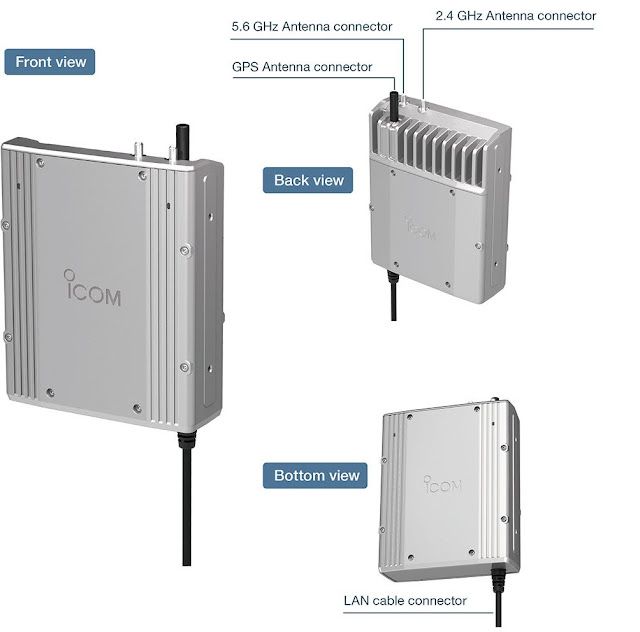In 2021, ICOM announced that they were developing a transceiver for the microwave bands. At the time, it seemed like a highly unusual but welcome development.
In April of 2022, they announced more details. They write... "Under the theme of “ICOM SHF Project – Super High Frequency Band Challenge –”, we started to develop a new amateur radio available for use in the 2.4 G
Icom engineers are working hard to research and develop a number of never cleared challenges within the SHF band, such as large cable loss and higher frequency stability requirements. The ultimate goal is to bring it to the market as a new radio product. Icom is striving to bring to you a new era in fun and possibilities of an SHF band amateur radio, which to date has had high technical and equipment hurdles to overcome, and we hope to make these bands more attractive and active so that anyone can easily operate on them. We are developing an epoch-making SHF band amateur radio that no one has never imagined before."
The microwave radio is essentially a box that this designed to be fitted at the top of a mast or roof of a house. This will keep any coax losses to an absolute minimum.
There are two SMA connectors on the top of the unit for antennas for 2.4 GHz and 5.6 GHz.
The unit also has a GPS antenna. This will be used to achieve frequency stability which would be very difficult otherwise.
ICOM write... "When installing the RF module directly under the antenna, the issue of how to supply DC power arises. Therefore, we decided to adopt PoE (Power over Ethernet) technology that supplies power over a LAN cable. Since Ethernet twisted pair wiring is limited to 100 meters, it is possible to install the RF module at a location 100 meters away from your shack (the controller). By adopting PoE technology, the connection can be made with a single cable, and the RF module can be installed more freely.
Moreover, the PoE technology makes it possible to supply power with low power loss. Normally, if the power cable is extended to 20 meters, the voltage drop will be too large for a 10 watt transceiver, and it will not operate properly. With PoE technology, DC power loss can be reduced by raising the voltage and reducing the current, so it is possible to supply stable power, even if the cable is long."
Notes & Comments:
1) Power?? They don't say. If ICOM are talking about overcoming DC power losses then I think it suggests that the power is in the 'watts' range rather than say 50 to 100 milliwatts. I suspect it may well be a few watts and less than 10 watts.
2) Why 2.4 GHz and 5.6 GHz?? Why not the 1.2 GHz (23cms) band where the losses are lower? I suspect it's because 2.4 GHz and 5.6 GHz are popular bands for WiFi and drones. There is already a lot of commercial antennas and equipment available for these bands and it makes sense to avail of it.
It's also not hard to imagine some demand in Europe for use of this unit as part of a transmission setup to the QO-100 geostationary satellite which has an uplink on 2.4 GHz and downlink on 10 GHz.
The 1.2 GHz band is also under pressure from commercial interests and I'd think companies would think twice before developing equipment for a band where permission might be withdrawn in the future.
3) Controller... This is based on the IC-705 radio and it's likely to use a lot of the same components and parts. This not only reduces costs in terms of parts but a lot of the work in terms of software and user interface is already done.
4) Cost?? On the subject of cost, I suspect this unit is certainly going to be expensive. ICOM gear isn't noted for being cheap anyway and I'd expect this unit will cost about the same as an IC-705 i.e. €1500 / $1500. We'll have to wait and see.
No matter what the price is and what people think, this is very much a niche product and certainly not a money spinner for ICOM.
5) Modes?? I'm sure the first thing people will think of are modes like FM, SSB and CW. As an ICOM product, I'd be surprised if it didn't support D-Star. But what about wide band data modes? Will this unit be used for data links and not just for weak signal work? Could it be part of an amateur radio microwave data network and not just a basic radio for basic two way communications?
In conclusion: This is a very welcome development by ICOM and it has the potential to introduce a lot of people to the microwave bands. It really is a big deal to have one of the main amateur radio manufacturers making equipment for these bands.
There is the potential that if ICOM sell enough of these units then they might encourage others to make some accessories or other related equipment. These units act as a seed and might encourage a lot more activity on these microwave bands.
While it's likely that most interest is going to be in areas where there is a high concentration of radio amateurs, it will be interesting to see how this project develops.
Addendum: The prototype model will be displayed at the Dayton Hamvention in Ohio, USA from 20th May 2022.
ICOM SHF Microwave Project Website with PDF downloadable files. Click HERE
Source: ICOM JAPAN and John EI7GL
ED: A very good friend Mike Bosch ZS2FM (SK) once said to me that the future of amateur radio lies in the GHZ bands! I fully agree with him!! - ZS1I







